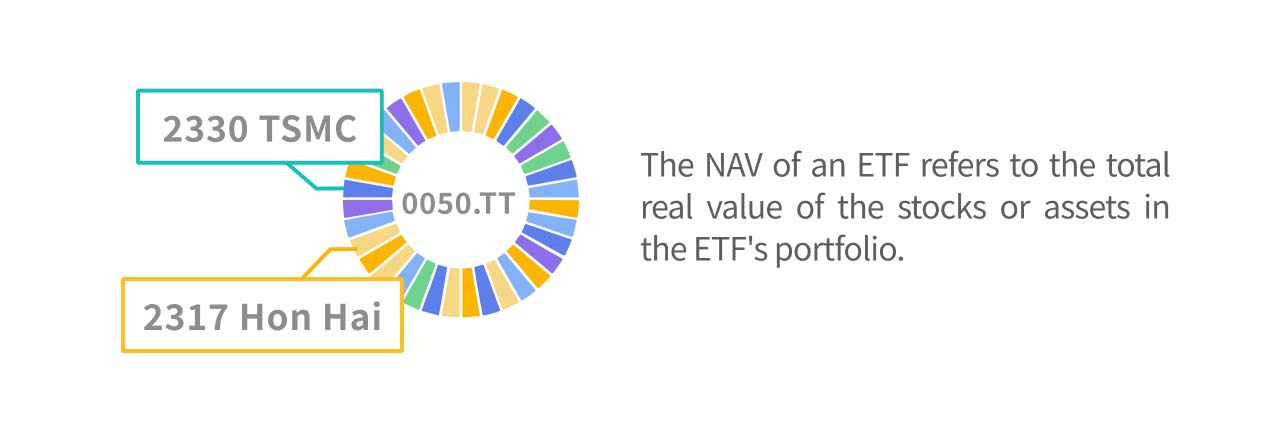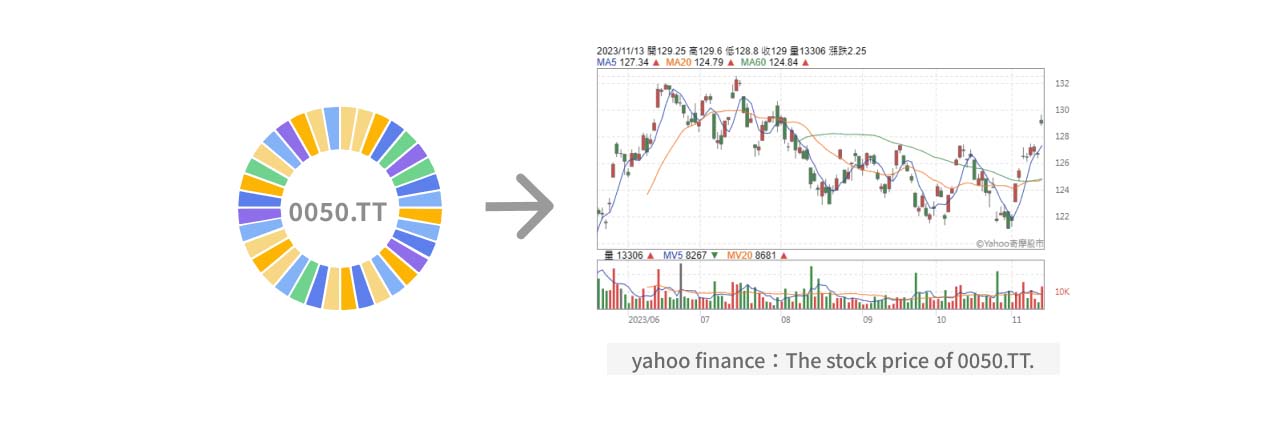ETF (Exchange Traded Fund) refers to index-tracking funds. Due to its features such as small investment amounts, risk diversification, and relative ease of use, ETFs have become one of the most popular financial products in recent years. Before investing in ETFs, there are a few advanced metrics that investors should consider. Below we will be introducing one of these advanced concepts: discount and premium.
For those who want to learn more about ETF, you can refer to our aritcle: A Basic Introduction to ETF
What are Net Asset Value (NAV) and Market Price
Before diving into the concept of discount and premium, we need to understand the two ways of measuring an ETF’s value: Net Asset Value (NAV) and market price.

NAV: Measured by the actual value of the basket of securities
The NAV of an ETF refers to the total real value of the stocks or assets in the ETF's portfolio, calculated as "the sum of the market prices of all components in the ETF divided by the total number of shares issued." Simply put, the NAV represents the total market value of the ETF's current portfolio, or the ETF's intrinsic value. In other words, with an amount equal to the NAV, one could replicate the same portfolio in the same proportions as the ETF.

Market Price: The price at which the ETF is traded
The market price of an ETF is the price at which it is bought and sold by investors in the secondary market. Since ETFs are financial products that can be traded on the market, the interest (or demand) from investors affects the price trend of the ETF.
Generally, the NAV and market price are closely aligned, indicating that "the value of the ETF’s contents" is similar to "the price at which the ETF is being traded." When the two prices diverge significantly, there may be an arbitrage opportunity.
For those who want to know more, you can refer to this article: Introduction to ETF Net Asset Value (NAV)
What are Discount and Premium and What Do They Indicate
After understanding the concepts of NAV and market price, we can now discuss the idea of discount and premium.
ETF Discount: Market Price < NAV
This indicates that the ETF is being traded at a price lower than the total market value of its underlying portfolio, meaning investors are only willing to trade a higher-value product at a lower price. The following are some possible reasons for a discount:
- The market generally has a pessimistic outlook on the future performance of the ETF.
- A short-term sell-off in the ETF results in a temporary price drop.
ETF Premium: Market Price > NAV
This indicates that the ETF is being traded at a price higher than the total market value of its underlying portfolio, meaning investors are willing to trade a lower-value product at a higher price. The following are some possible reasons for a premium:
- The ETF is extremely popular in the market, causing investors to buy at higher prices.
- A short-term surge in buying leads to a price increase due to heightened demand.
Other Factors Leading to Discount or Premium
In addition to the basic supply-demand factors mentioned above, other factors such as liquidity and policies can affect the ETF’s price.
- ETFs with poor liquidity: When investors want to sell, the lack of buyers may force them to lower the price to attract interest.
- Policy restrictions: Factors such as capital controls or large currency fluctuations may increase transaction costs due to trading delays or inconvenience.
In general, the smaller the discount or premium range, the better. Some in the market suggest that a reasonable discount/premium range is within +/- 1%. When trading, investors should choose a range that they are comfortable with.
Quick Summary
ETF NAV vs. Market Price
- NAV: The total actual value of the assets in the ETF’s portfolio.
- Market Price: The price at which the ETF is bought and sold in the secondary market.
ETF Discount vs. Premium
- Discount: When the ETF’s market price < NAV, meaning investors are only willing to trade a higher-value product at a lower price.
- Premium: When the ETF’s market price > NAV, meaning investors are willing to trade a lower-value product at a higher price.
For more articles about ETF: Introduction to ETF Income Equalization Mechanism
